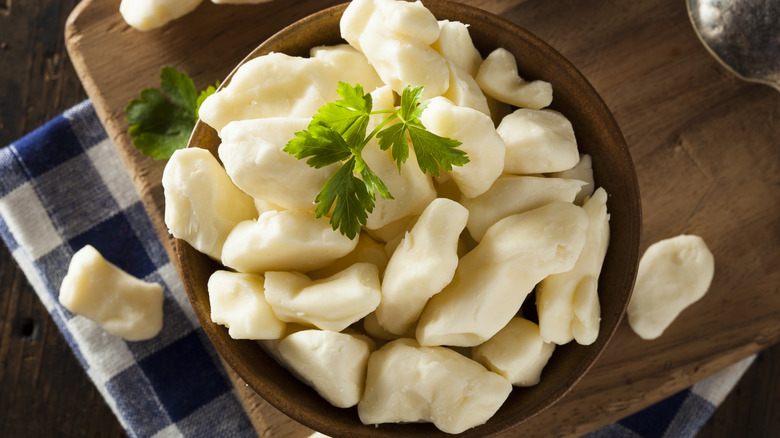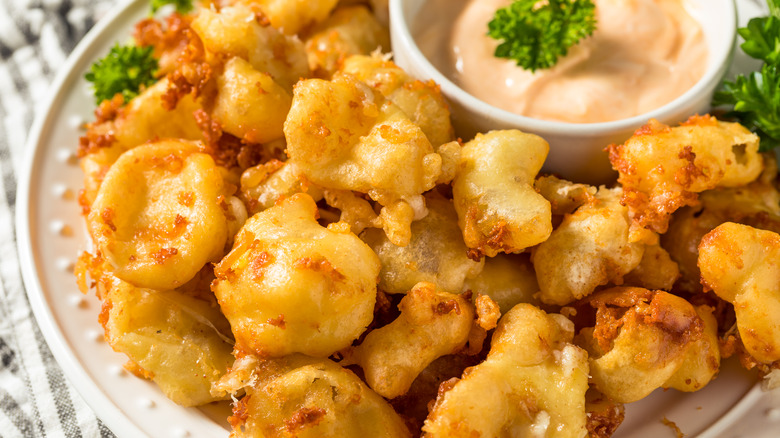What Type Of Cheese Are Wisconsin Cheese Curds?
They say you can judge the freshness of a cheese curd by the loudness of its squeak as you bite into it. And in Wisconsin, you are bound to get very squeaky and fresh cheese curds, whether at a farmers market, grocery store, or even at the corner gas station. Unlike most cheeses, the cheese used for curds is fresh, even only a day old in Wisconsin, according to Allrecipes. In other states where the laws are different, the freshness of cheese curds isn't guaranteed. Curds are even allowed to be sold unrefrigerated in the Dairy State if they are only one day out from production. Wisconsin Cheese contends that while cheese curds can last for several days, it's best to enjoy them within 24 hours of being made. After a week, cheese curds become simply cheese, Wisconsin Master Cheesemaker Bob Wills told Allrecipes. Then, they are great for salads and poutine.
Although often sold breaded and deep fried in different flavors, such as jalapeno, garlic and dill, and Bloody Mary, many cheese lovers still prefer the original, plain cheese curd. Wisconsin Cheese says that cheese curds can range in color from white to orange and get their shape randomly while made. Their flavor is described as milky, salty, and mostly mild.
While you may be a cheese curd fan, you might be wondering what kind of cheese is used to make these delicious deep-fried goodies. As it turns out, it's a cheese that isn't that uncommon at all.
Bite-sized deliciousness
Cheese curds aren't made from an unusual, hard-to-find cheese, despite the reverence with which they are spoken about in Wisconsin. In fact, they are simply made from baby cheddar, according to Allrecipes. As cheddar ages, its texture gets crumblier and its flavor becomes sharper, per Cheese.com. Like baby cheddar cheese curds, matured cheddar ranges in color and can be anywhere from white to orange, if coloring is added. When they are eaten soon after being made, the curds have a smooth texture.
Cheese curds get their flavoring from the enzymes added to cow's milk to make cheddar cheese (via National Dairy Council). The bits of cheese that are called curds are created during the cheesemaking process when they are divided from the whey, per Allrecipes. The curds are then bagged to be sold right away, versus being put in a mold to age into a more mature cheddar. Cheese curds can even be made at home with gallons of milk, calcium chloride, thermophilic culture, liquid rennet, and cheese salt in an eight-step process, according to New England Cheesemaking Supply Co.
If you can't make it to Wisconsin anytime soon, and making them in your kitchen sounds like a bit too much work, don't worry. There are plenty of cheese shops willing to mail their cheese with a squeak to hungry cheese lovers.

